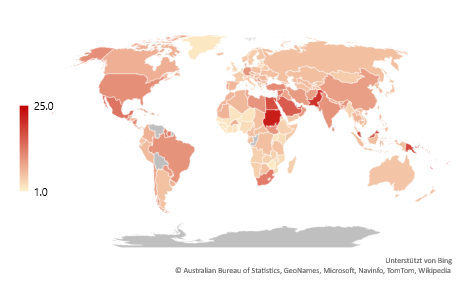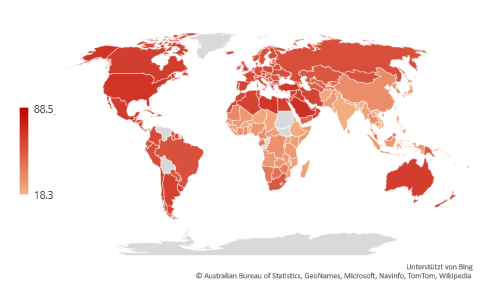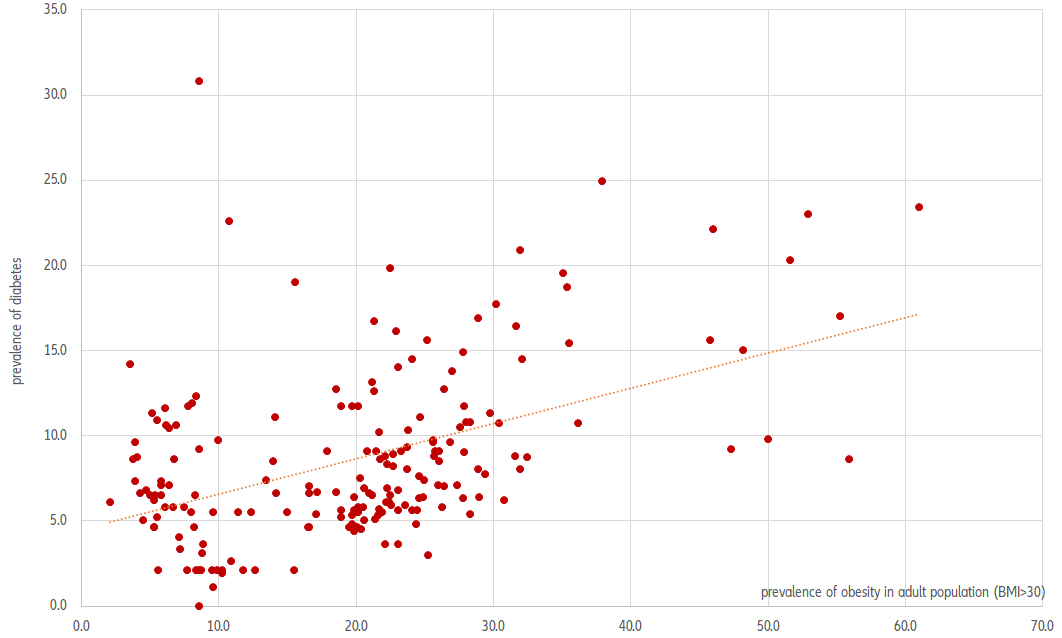In the course of this development, diabetes advanced also to one of the Top 10 causes of death worldwide, accounting for 1.5 million deaths in 2019, an increase of 70% compared to 2000. Yet, as it is a major risk factor for developing infections and a leading cause of cardiovascular diseases, such as heart attacks and stroke, chronic kidney disease or failure as well as blindness and lower limb amputation, it probably contributes indirectly to a much higher number of deaths. In fact, the IDF estimates that diabetes will be responsible for 6.7 million deaths worldwide in 2021. This would be higher than the number of registered Covid-19 deaths since the begin of the pandemic.
To prevent or at least delay diabetes complications, people with diabetes need not only medication, they need also regular monitoring to maintain blood glucose levels, blood pressure, and cholesterol at or close to normal level. The American Diabetes Association estimated that the annual per capita health care expenditures for people with diabetes are 2.3 times the costs which had occurred in the absence of diabetes. Worldwide health expenditures caused by diabetes are expected to amount to 790 billion Euro in 2021.
Almost two thirds of the global health expenditures for diabetes were spent in four countries: The health expenditures in
the United States accounted for 39%, those in China for 17 % and
Brazil’s and
Germany’s each for 4% of the global health expenditures for diabetes.
There are three types of diabetes : Type 1, type 2 and gestational diabetes mellitus. Type 1 diabetes, which was previously known as insulin-depen-dent, juvenile or childhood-onset diabetes, is the major cause of diabetes in childhood but can occur at any age. It is characterized by deficient insulin production and requires daily administration of insulin. At present, neither the cause of Type 1 diabetes nor the means to prevent it are known. Gestational diabetes occurs during pregnancy. However, the most common form of diabetes is type 2 diabetes: 90% of all people with diabetes have type 2 diabetes, also known as non-insulin dependent or adult-onset diabetes. It results from the body’s ineffective use of insulin.
The onset of type 2 diabetes can be prevented or at least delayed by a healthy diet, regular physical activity, maintaining a normal body weight and avoiding tobacco, as major risk factors are excess body weight and physical inactivity.
Against this background, efforts to dampen the increasing prevalence
of overweight in societies gain in importance. According to the latest available WHO the share of persons being overweight, i.e., having a BMI of 25 or higher, ranged between 15% in Vietnam to 85.6% in Nauru. In most major industrialized countries, more than 50% of the population were overweight, in the USA for example the share has increased to 64.5%.
A major exception is Japan, where merely 24% of the population were overweight (see Figure 2).
Figure 2: Prevalence of overweight in adult population, in percent





